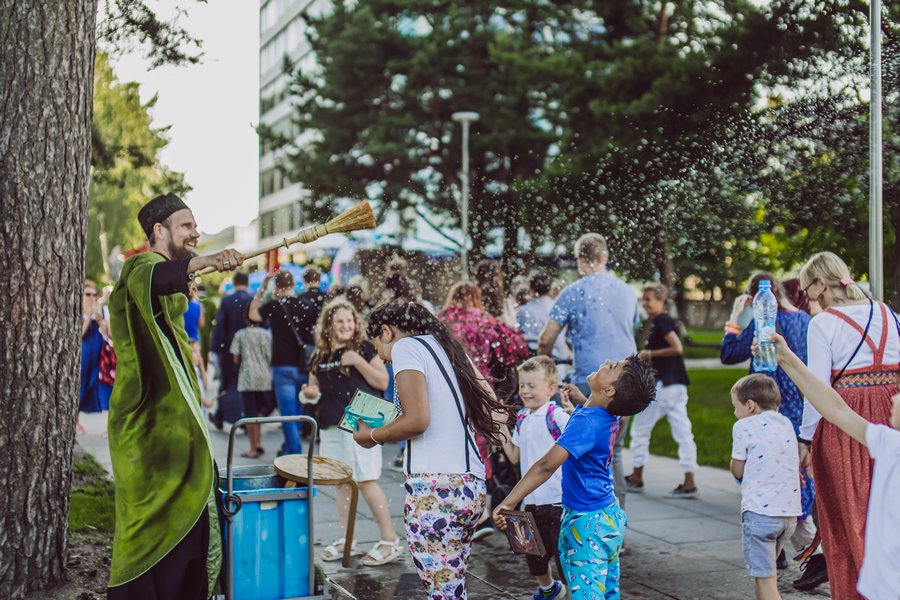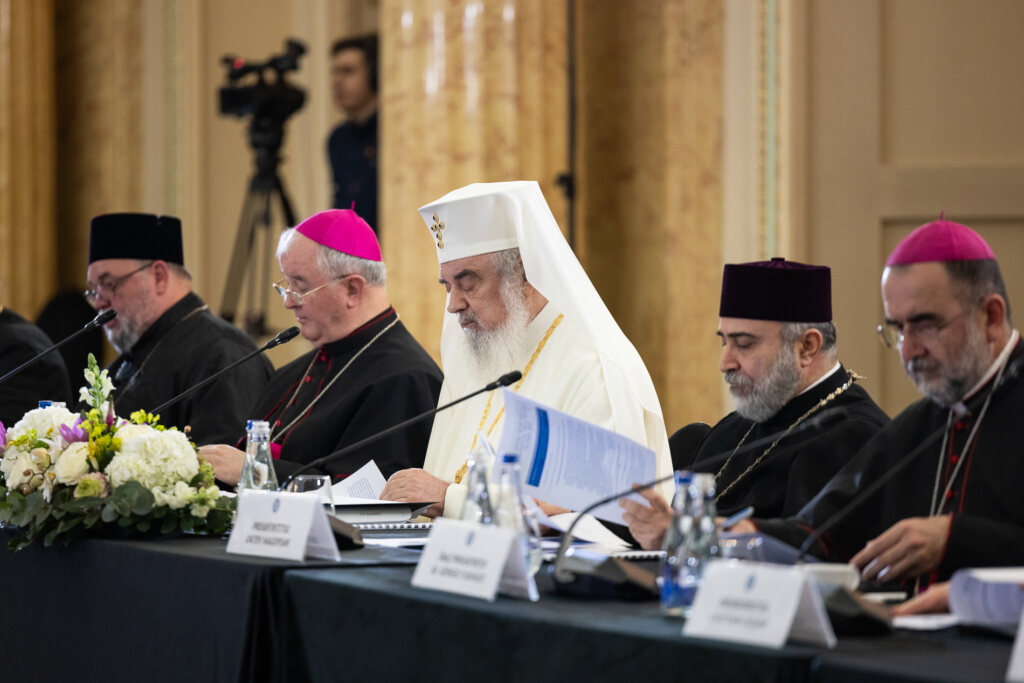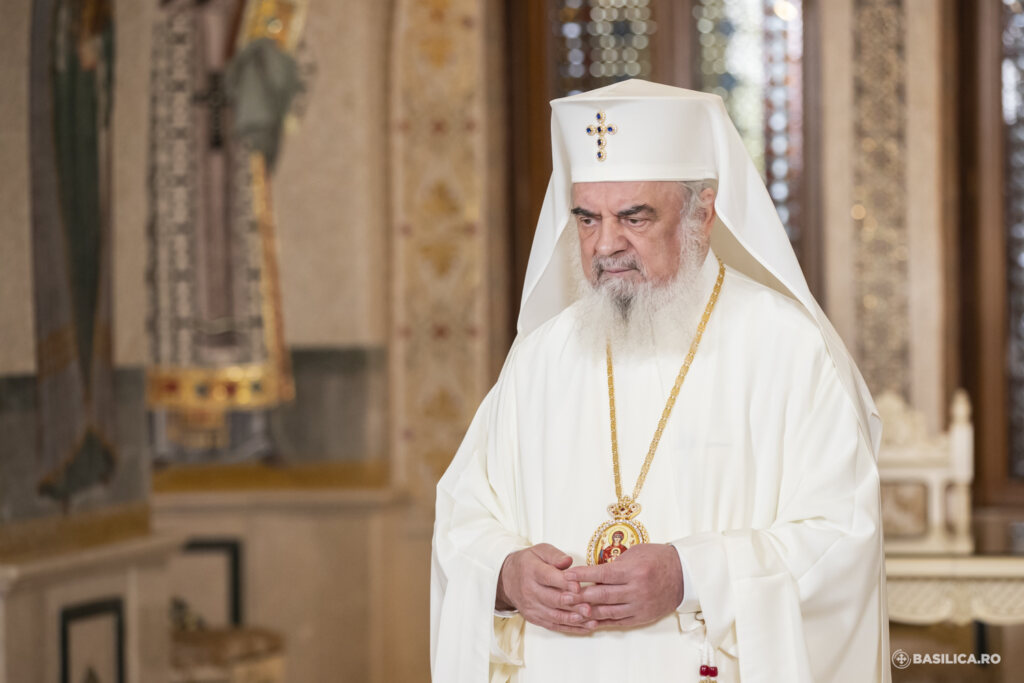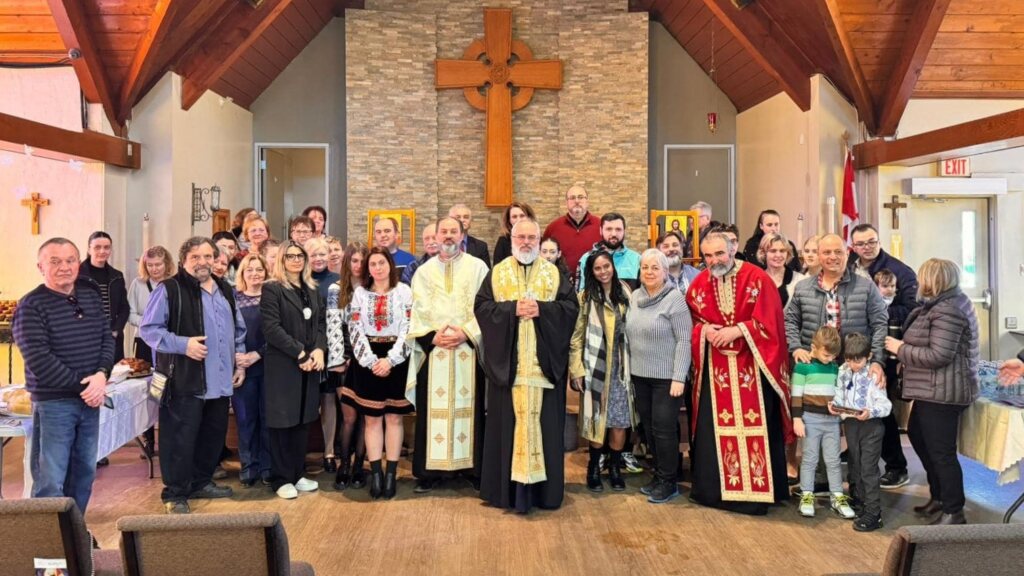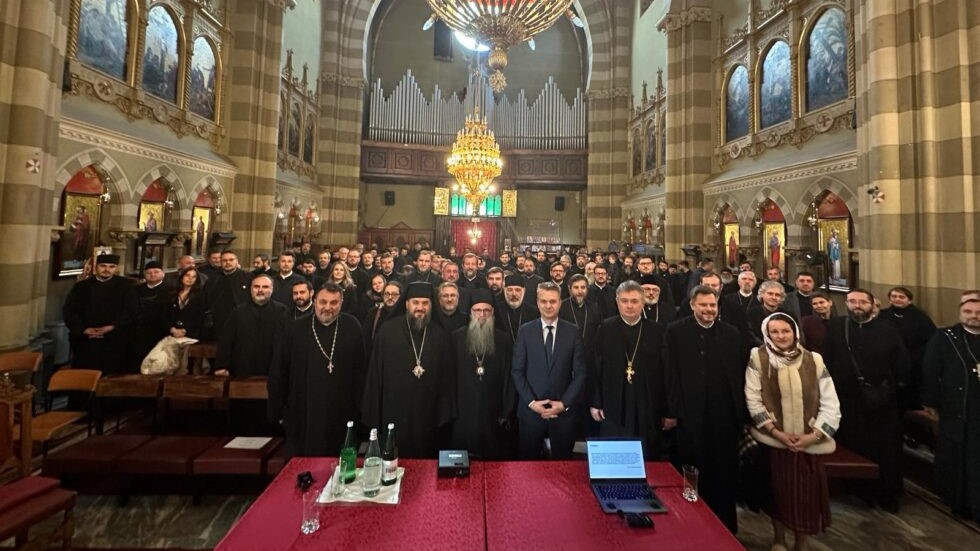Today, 21 May 2013, the Saints Emperors Constantine and his mother Helen were celebrated in the Romanian Orthodox Church. On this occasion, the Patriarchal Cathedral of Bucharest celebrated its historical dedication day.
The Divine Liturgy was celebrated by His Beatitude Daniel, Patriarch of the Romanian Orthodox Church and eight hierarchs, assisted by a group of priests and deacons, on a podium specially arranged near the Patriarchal Cathedral.
Besides His Beatitude, the following hierarchs celebrated: His Eminence Dionisie, Metropolitan of Corinth, His Eminence Ciprian, Archbishop of Buzău and Vrancea, His Eminence Calinic, Archbishop of Argeș and Muscel, His Eminence Casian, Archbishop of Lower Danube, His Grace Ambrozie, Bishop of Giurgiu, His Grace Visarion, Bishop of Tulcea, His Grace Siluan, Bishop of the Romanian Orthodox of Hungary and His Grace Varsanufie Prahoveanul, Assistant Bishop to the Archdiocese of Bucharest.
After reading the Holy Gospel fragment, the Patriarch of Romania delivered a sermon in which he spoke about the significance of the Evangelical pericope read during the Divine Liturgy, as well as of the Apostle: “This Gospel fragment is usually read when a hierarch is remembered. It is rather significant that this fragment of the Gospel was chosen to be read at the remembrance of Saint Emperor Constantine who was not a bishop, but who has become one due to the care that he took as a spiritual father and protector of the Church of Christ. This is why he is a sort of Bishop from outside, a supervisor, and protector of the Church. The Apostle read today is even more surprising because it does not speak of saints in general, but of the conversion of Saint Paul the Apostle in front of the Damascus gates while he was persecuting the Christians. Thus, Saint Paul the Apostle changed from a persecutor of the Church into one of its greatest shepherds. He is the second after Christ due to his faith in Jesus Christ and in the Church. He, who was a persecutor of the Church, becomes one of the greatest missionaries of Christ and of the Church. Thus, here we see an analogy between the conversion of Saint Paul the Apostle, who sees an overwhelming light in broad day light, a light through which Christ speaks to him and changes his life, and Saint Emperor Constantine who has also seen a heavenly sign in the broad day light, not a blinding light, but the sign of the Holy Cross in the sky and the assurance that he would be victorious through that sign. Saint Emperor Constantine marked his army with the sign of the Holy Cross and on 28 October 312, he defeated the army of his enemy Maxentius, near Rome, at the Eagle Bridge, on the River Tiber, although this one was much larger. As a sign of gratitude, Saint Emperor Constantine started protecting the Christians. First, next year he granted religious freedom through the Edict of Mediolanum, today’s Milan, and then helped the Church with many facilities.”
The Saints Emperors Constantine and Helen have changed the face of the world and marked a turning point in the history, showed the Patriarch of Romania, saying: “From a persecutor, the Roman Empire becomes the Christian Empire. The Edict of religious tolerance issued in 313, in Milan, says that every Roman citizen was free to follow the faith he wanted to and venerate the divinity in the heaven as he wished. Therefore, this was a Christian freedom, a religious freedom for all citizens, including first of all the Christians. Given the fact that he mentioned that everybody could pray a divinity in the heaven, not on the earth, he dissolved the cult of the emperor as God.”
Then, His Beatitude presented the measures that emperor Constantine took in favour of the Christians: “Saint Constantine the Great was a shepherd of the Church, namely one her protectors. The persecuted ones could come back from exile, the Christians who had lost churches, places of worship or estates received them back. The Saint Emperor showed special care for the missionary work of the Church. He built places of worship together with his mother in the most important places in the East and West, in Jerusalem, Rome, and Constantinople where he moved the capital of the empire, naming the Byzantium the New Rome, and Constantinople, after his name. In 306 he becomes emperor in one of the four parts of the empire, because in his time the Roman Empire was led by two emperors, one in the West and one in the East, each of them with a Caesar associated, namely a second emperor. After the death of his father, Emperor Constantin Clor, in 306, Saint Constantine becomes emperor of the fourth part of the empire, and then, having defeated Maxentius, in 313, he remains the only emperor in the West. In 324, he defeated Liciniu, who although first agreed with Saint Constantine to give freedom to the Christians, later on, he changed his mind. As soon as he became the only emperor in the entire Roman Empire, Saint Constantine, who gave liberty to the persecuted, was interested in the unity of the Church.”
The Patriarch of Romania has also shown the role of Emperor Constantine at the first Ecumenical Synod: “After the persecutions from outside ceased, the heresies turmoil of the interior began. This is why in 325, Saint Constantine convened the first Ecumenical Synod of the whole world at Nicene, near Constantinople. This synod formulated the first eight articles of the Nicene – Constantinopolitan Creed that we say today. Thus, Saint Emperor Constantine was interested in the unity of faith of the empire and negotiated so as, in fact, he organised this Ecumenical Synod providing the imperial post and palace of Nicene to the hierarchs, because he lived in another palace in Nicomidia, closely supervising the Ecumenical Synod I. Thus, the Synod affirmed that Jesus Christ is true God of true God; begotten, not made; being of one essence with the Father; by Whom all things were made.
The Patriarch of the Romanian Orthodox Church has also spoken about the activity of Saint Constantine the Great in the territory of our country: “Saint Emperor Constantine was born not far from our country, in today’s Serbia. But there were no Serbs at the time there, because they came in the 7th century and were Christianised in the 9th century, while Saint Constantine was born most probably in 273. The region he was born in was named Dacia Mediteranea which means that it was a region inhabited by Dacian – Romans. He was born in this region, in Naisus city, today named Nis. He had a special concern and sympathy for the territory of our country, so that in a way he re-conquered Dacia after it was deserted by Emperor Aurelian, because of the invasions of the migratory Barbarian populations. We must remember here what is very seldom remembered, that in order to show his interest in Dacia region, namely in later on Wallachia, in the Southern part of the country, he built a bridge over the River Danube, bigger than Traian’s bridge, namely Constantine’s bridge from Sucidava, Corabia, Celei, in today’s Oltenia, which should be better known. This bridge over two kilometres long was a connection that facilitated his activity in this territory which was somehow lost and then gained again for the Roman Empire. He continued the Christianisation that Saint Andrew the Apostle had begun. Saints Emperors Constantine and Helen are worshipped with much devotion for the example of their life, as well as for their love for Christ and Church. They become models for all of us that keep the right faith, protect and help the Church, as well as examples of education. Saint Helen educated her son in faith so that he became a great protector of the Church and a civilizer. His laws protected human dignity, forbid torture, divorce, and abortion in the 4th century. Everywhere the care for the poor, orphans, distressed is seen, manifested both by the emperor and by the empress. Saint Helen was not named empress only because she was his mother, but declared Augusta, namely empress, by Saint Constantine the Great.
To end with the sermon, the Patriarch of Romania underlined the devotion of the Romanian people for the Saints Emperors Constantine and Helen and wished all the people of the names of the Saints Emperors long happy life: “The devotion of the Romanian people for the Saints Emperors Constantine and Helen is very great. The fact that the Patriarchal Cathedral was dedicated to the Saints Emperors by its founder Prince Constantine Șerban Basarab shows us that the Romanian rulers followed the example of the Saint Emperor, having been protectors and helpers of the Church. Over 1 700 000 Romanians are named Constantine and Helen or of derived names. We wish them all good health, happiness, good deeds and salvation, for the glory of the Most Holy Trinity and the joy of the Church.
To end with the Divine Liturgy, His Beatitude Patriarch Daniel offered His Eminence Metropolitan Dionisie of Corinth an icon of the Saints Emperors Constantine and Helen and said: we wish Your Eminence good health and much help of God in your missionary work and ask you to convey His Beatitude Archbishop Ieronim of Athens and all Greece all our appreciation and joy for having His Eminence Dionisie as guest on behalf of the Orthodox Church of Greece. We wish you many blessed years of life!”
After the Divine Liturgy, at 11.30 hours, the winners of the four national contests for children and adults organised in 2013 by the Romanian Patriarchate were announced and awarded prizes.
At 13.00 hours, the exhibition on the theme “Orthodox Icon – Light of the Faith” was opened in the Europa Christiana hall of the Patriarchate Palace. The exhibition displays the works of the contest organised by the Romanian Patriarchate.


